Seven Lessons in Inclusive Campus Design
In SCUP Journal, principal Mary Anne Ocampo delves into how the University of Kentucky spearheaded a first-of-its-kind DEI Facilities and Spaces Plan
 Sasaki
Sasaki
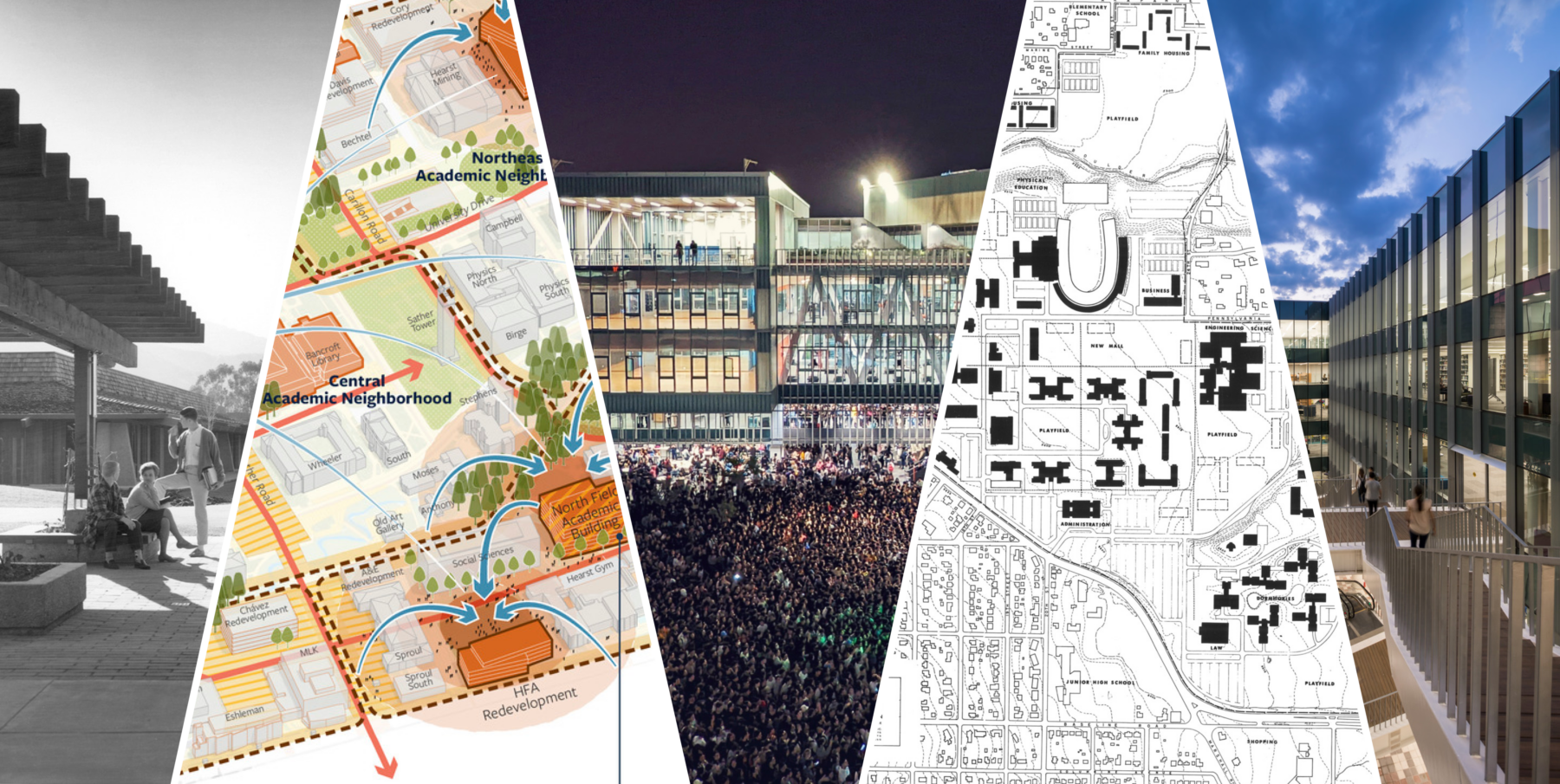
Where we learn shapes who we become.
Hideo Sasaki knew this well. In 1953, he established the practice now known as Sasaki, and in 1958, he became Chair of the Harvard Graduate School of Design’s landscape architecture department. How did a young Japanese-American, raised on a farm in California’s Central Valley, transition from internment during World War II to the pinnacle of his profession in just two decades? The intertwining narratives of Hideo Sasaki and the firm he founded are inseparably tied to higher education. Today, we continue to build on his legacy as we design spaces to learn, discover, and come together.
Like many in postwar America, Hideo enrolled in college during a time of unprecedented academic democratization, when new federal funding enabled broader socioeconomic access to the nation’s universities. However, due to his Japanese heritage, he faced explicit discrimination in academia. His struggle for admittance and his experience as part of a marginalized group contributed to his desire to incorporate all voices into the design process[1]. Hideo’s groundbreaking and inclusive design approach became his hallmark. Blurring disciplinary boundaries, he welcomed collaborators without ego, treating them as equals.
From this approach grew our practice, Sasaki, that bears his name—and new, higher standards for engagement with community and place. Over the last 70 years, we have designed integrated architecture, landscape architecture, and planning projects that stem from Hideo’s vision.
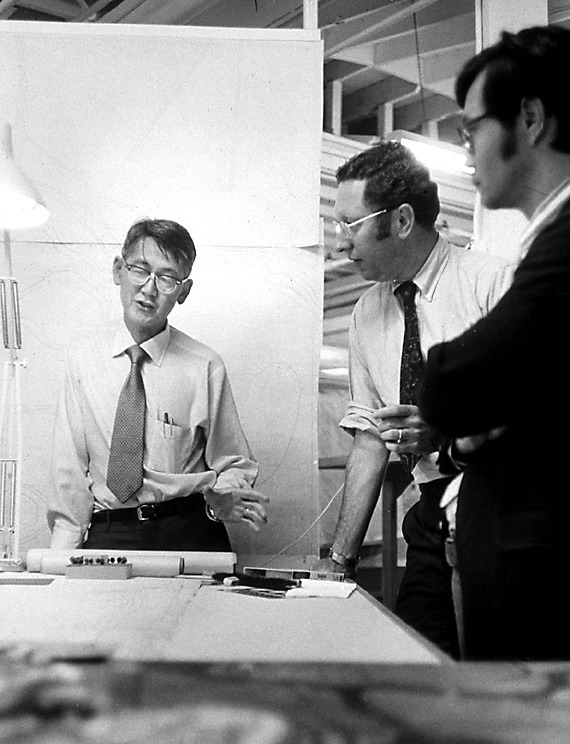
Hideo Sasaki, educator and practitioner
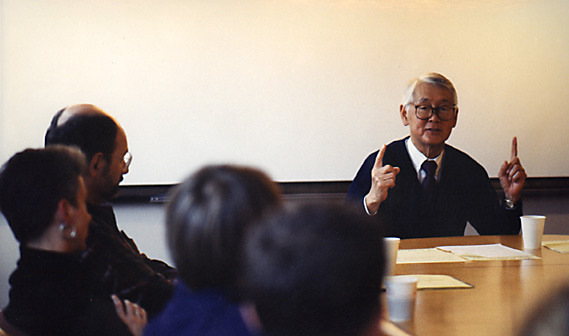
Hideo blurred the boundaries between his roles as an educator at Harvard and a practitioner. Many of his early hires were his students, and in the studio, he led them like a professor presiding over a critique. He asked questions rather than dictating decisions, encouraging a broad contribution of perspectives from his design teams. Hideo’s open, intellectual spirit of curiosity and inquiry were central to Sasaki’s DNA from the start. We aspire to uphold those same values throughout our practice.
While academia influenced the firm’s culture early on, it also provided much of our work. University projects benefit from the sort of integrated design for which Sasaki is so highly regarded—a campus plan can lead to a greater understanding of institutional and community needs. In turn, that plan guides architects and landscape architects, shaping their work. Many of these campus buildings, plans, and landscapes are among our firm’s finest achievements.
Here, we’ll take a look back at 70 years of Sasaki’s higher education practice across the country and around the world, reflect on how the field has evolved over the decades, and peek ahead at what’s to come.
Our firm’s first two decades were characterized by experimentation and optimism that grew from university classrooms into new practices like the one Hideo co-founded in Watertown, Massachusetts in 1953. Reflecting on this era, he once said:
We were all young and idealistic. We thought the world had no problems that could not be solved. We were not worried about the future or about fame or fortune. We were all very much concerned about ideas, and thinking up new ways. Those periods happen from time to time: A coalescing of different forces and ideas. [2]
This outlook is reflected in sweeping campus expansion plans in the 1960s, when universities rallied to accommodate a rapidly growing student population. In doing so, they sought to balance the scale of unprecedented development with traditional ideas of the college campus set amid leafy quads and shaded footpaths. With our expertise across planning and landscape architecture, Sasaki was well positioned to meet this challenge.
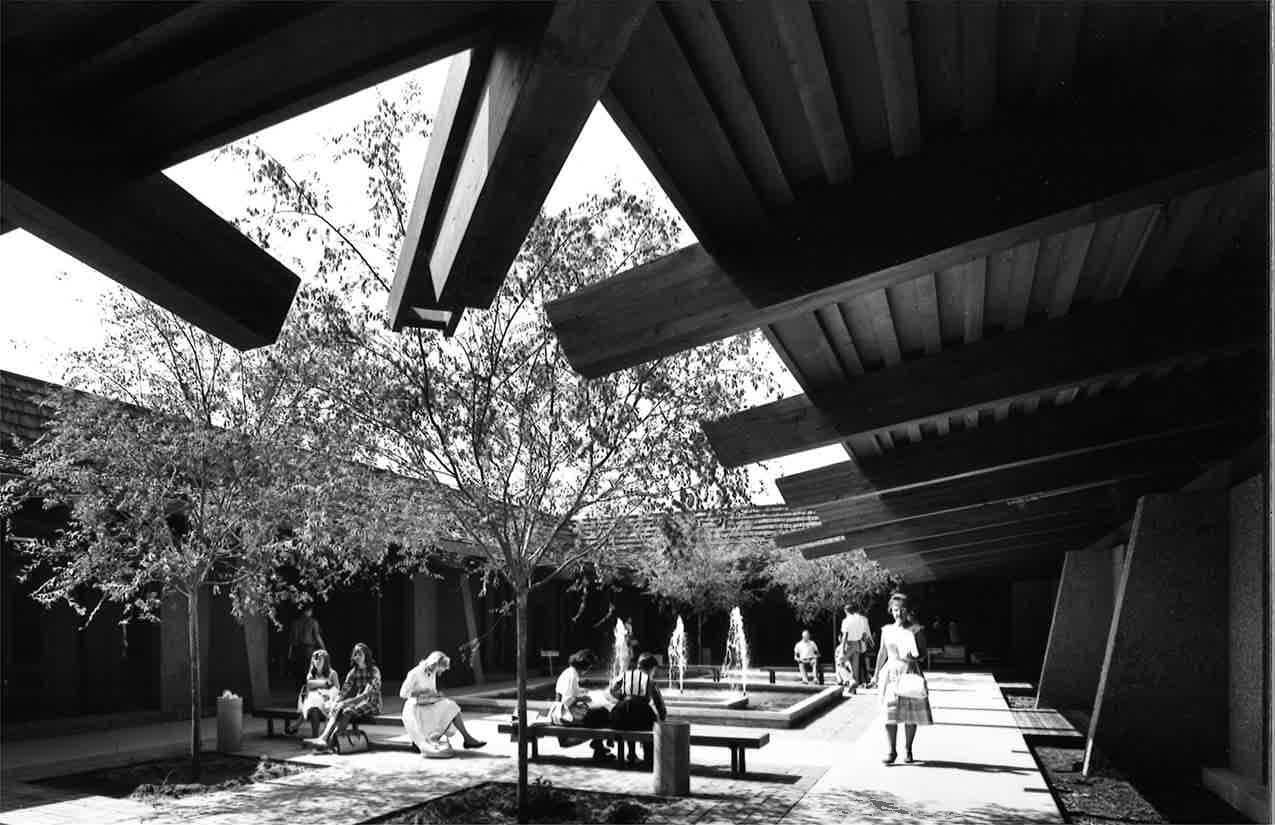
A courtyard at Foothill College
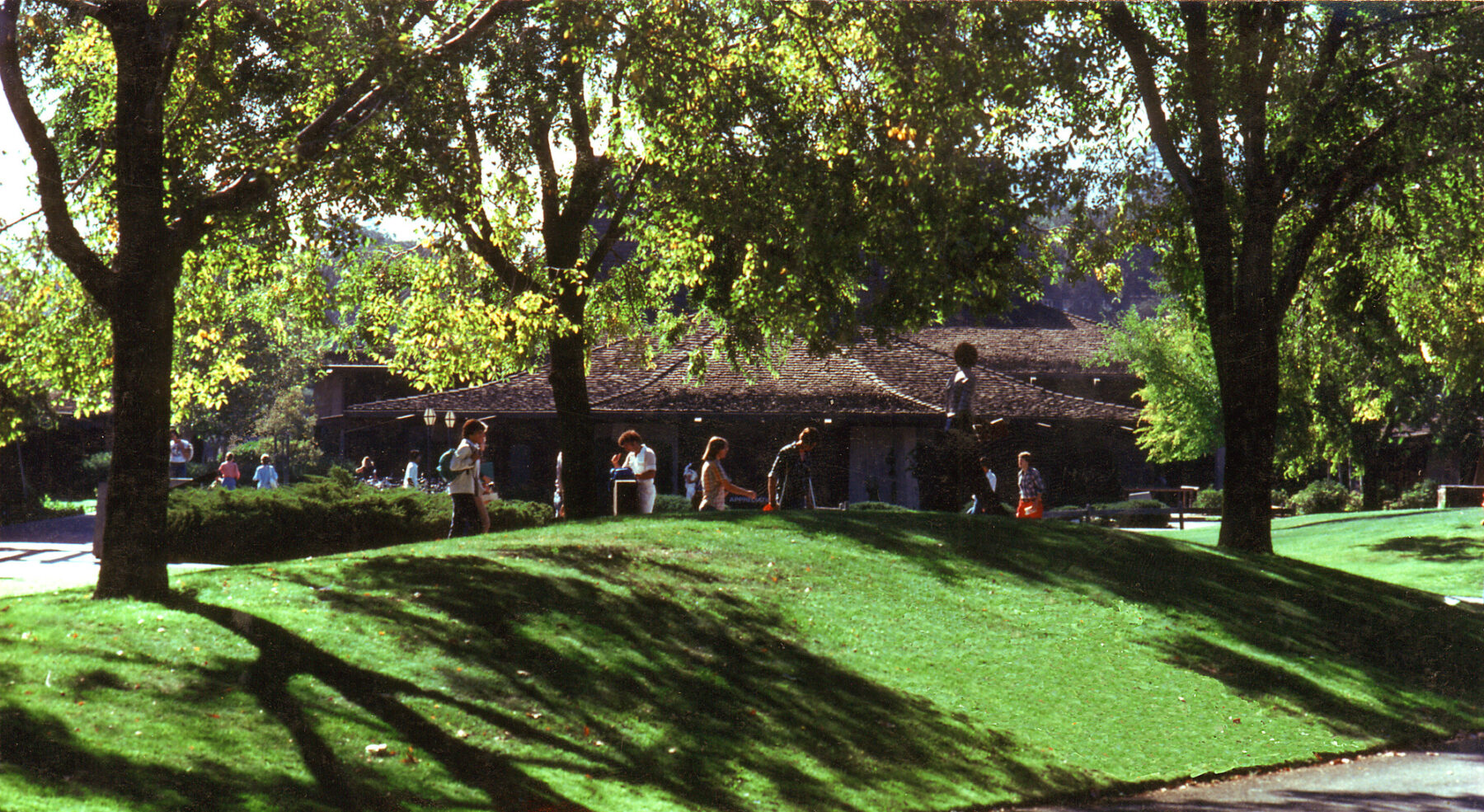
Foothill College’s quads are iconic for their gently rolling terrain
Working with architects Ernest J. Kump and Masten and Hurd, Sasaki designed the master plan for Foothill College, a new community college in Los Altos, California. To define the character of the campus, “the landscape architects introduced the concept of gently contoured mounds to recall the surrounding foothills and to contrast with the rectilinear layout of academic buildings,” as told by former Sasaki landscape architect Peter Walker[2]. This push and pull, working with architecture and landscape, became a signature of Sasaki’s approach.
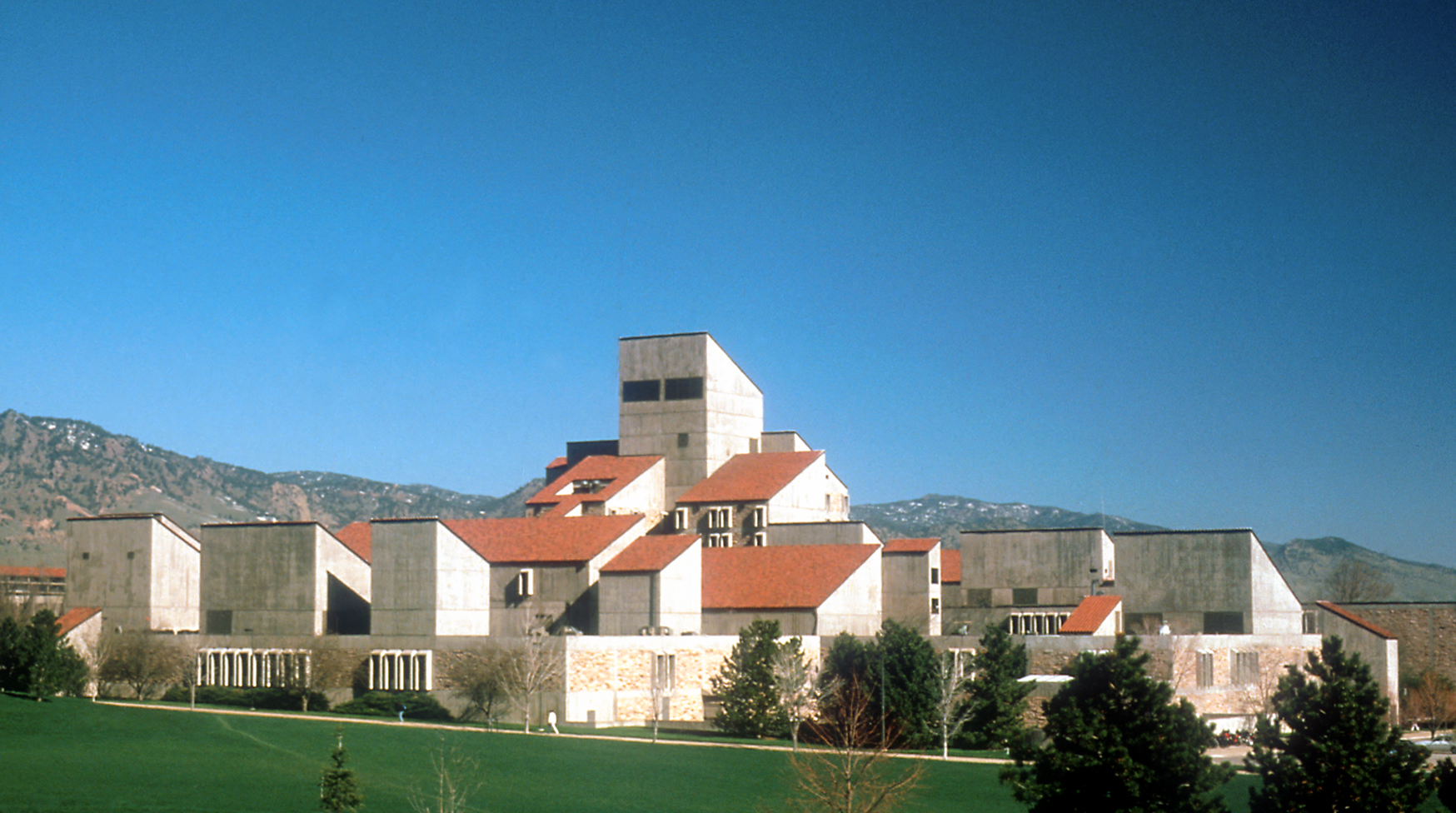
The scale of expansion at CU Boulder was reflected in the size of its new buildings, such as the Engineering Sciences Center
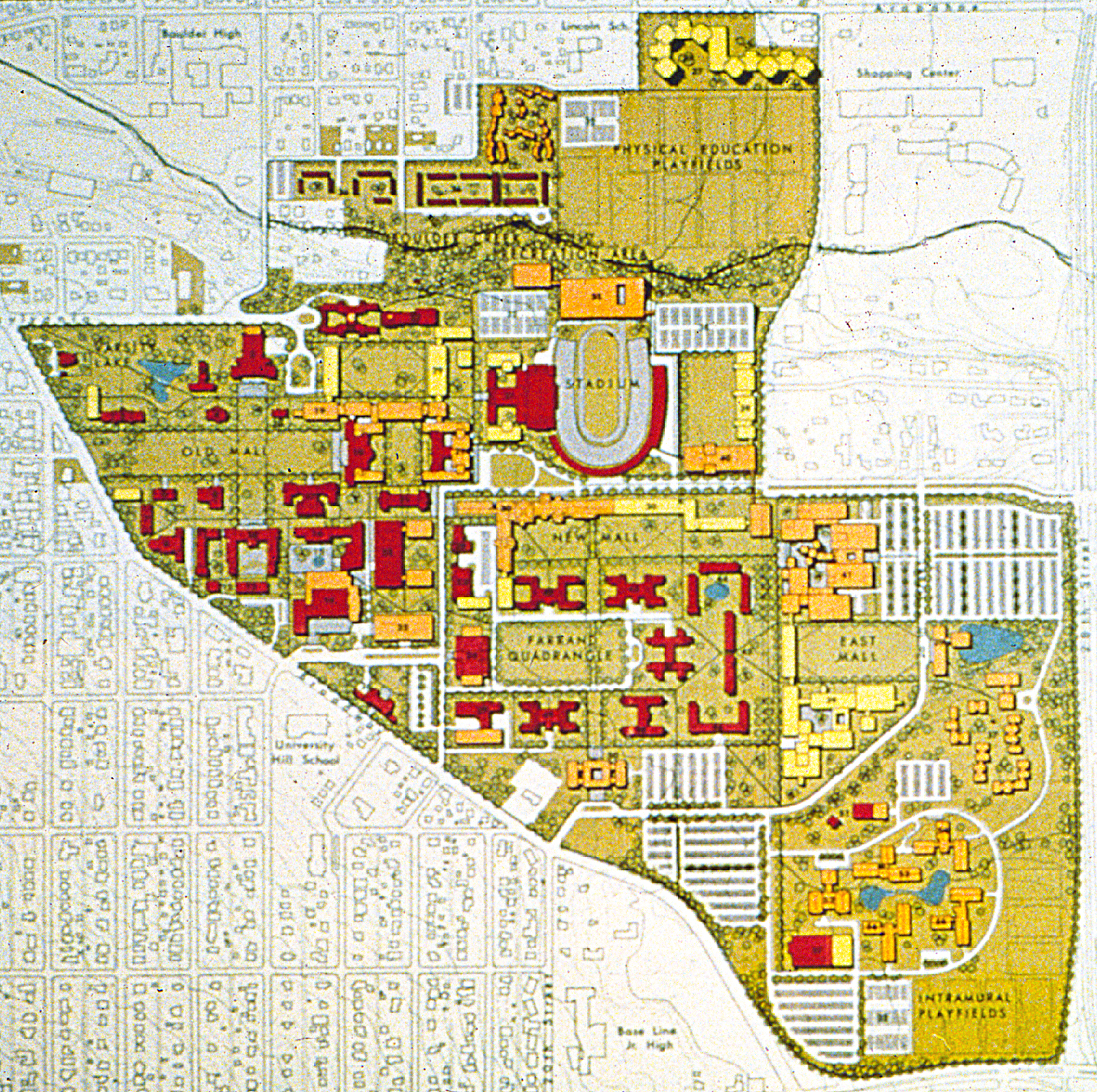
Sasaki’s plan for CU Boulder
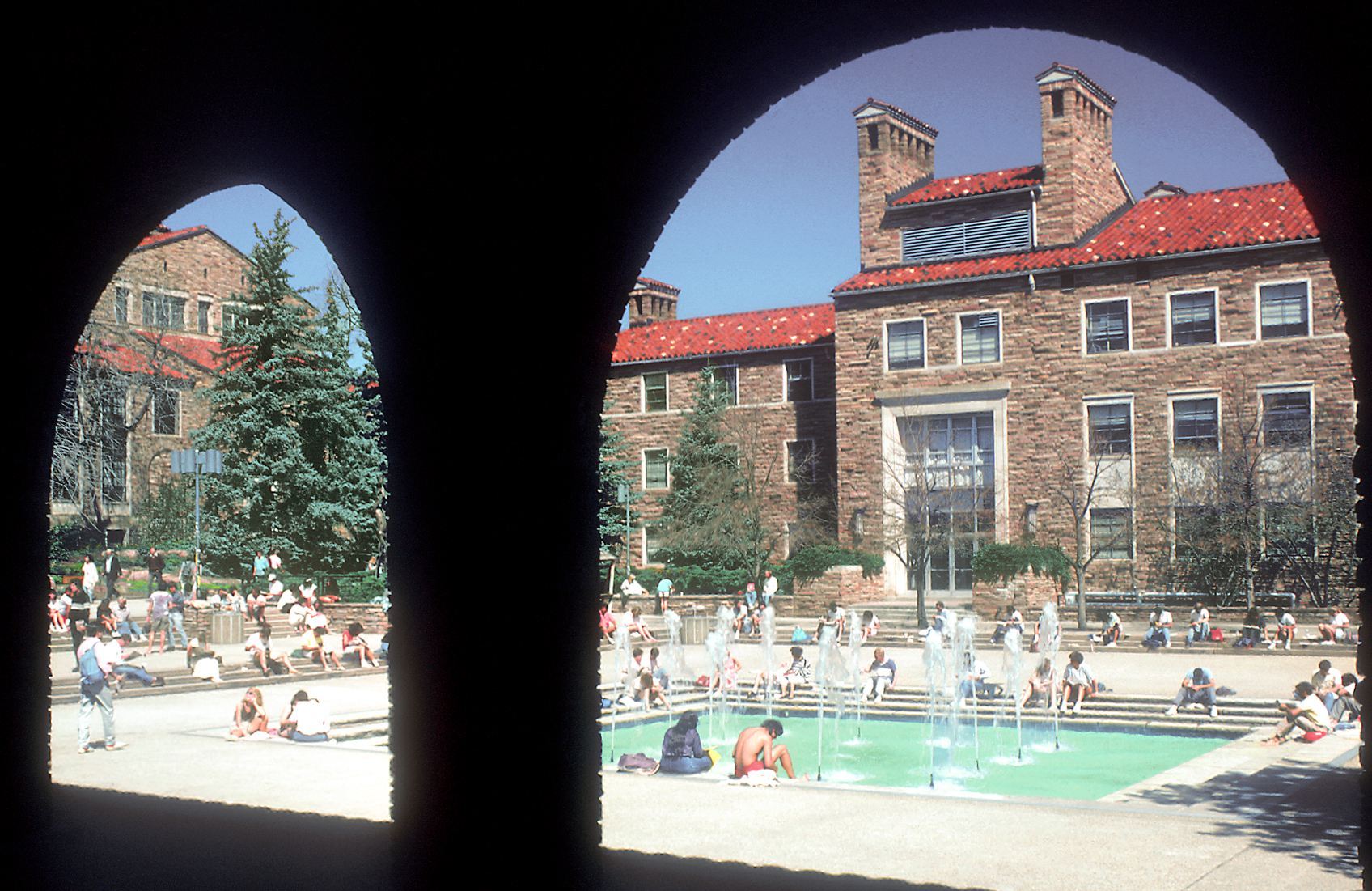
The plan succeeded at adapting the new parts of campus to the school’s unique Italianate architecture and its generous distribution of malls and courtyards
In the ’60s, enrollment at the University of Colorado Boulder was expected to double from 10,000 to 20,000 students by the end of the decade. Sasaki’s master plan charted a path forward for the university’s rapid expansion while maintaining a balance between new construction, open space, and the mountain views that ring the campus. New malls and courtyards seem to grow naturally from existing pedestrian paths, and massing guidelines mediate between the campus’s older existing Italianate buildings and much larger new facilities.
Sasaki partnered with Architectural Associates Colorado and Pietro Belluschi on the 1966 Engineering Sciences Center at Boulder. The knitted mat of small, angular volumes exemplifies both Sasaki’s sensitivity to site and the adaptation of our approach to a growing scale of institutional building. The architecture balanced mass and void, opening up to light and views while establishing a new landmark on campus. For the project, Kenneth DeMay, one of the principals involved in the design, said:
Many projects today are so large and complex they cannot be solved with a simple box set down on a site. At this scale a building must become a city, articulate, with an inner excitement of its own; and the traditional division between structure or site disappears: The building is the site…[5]
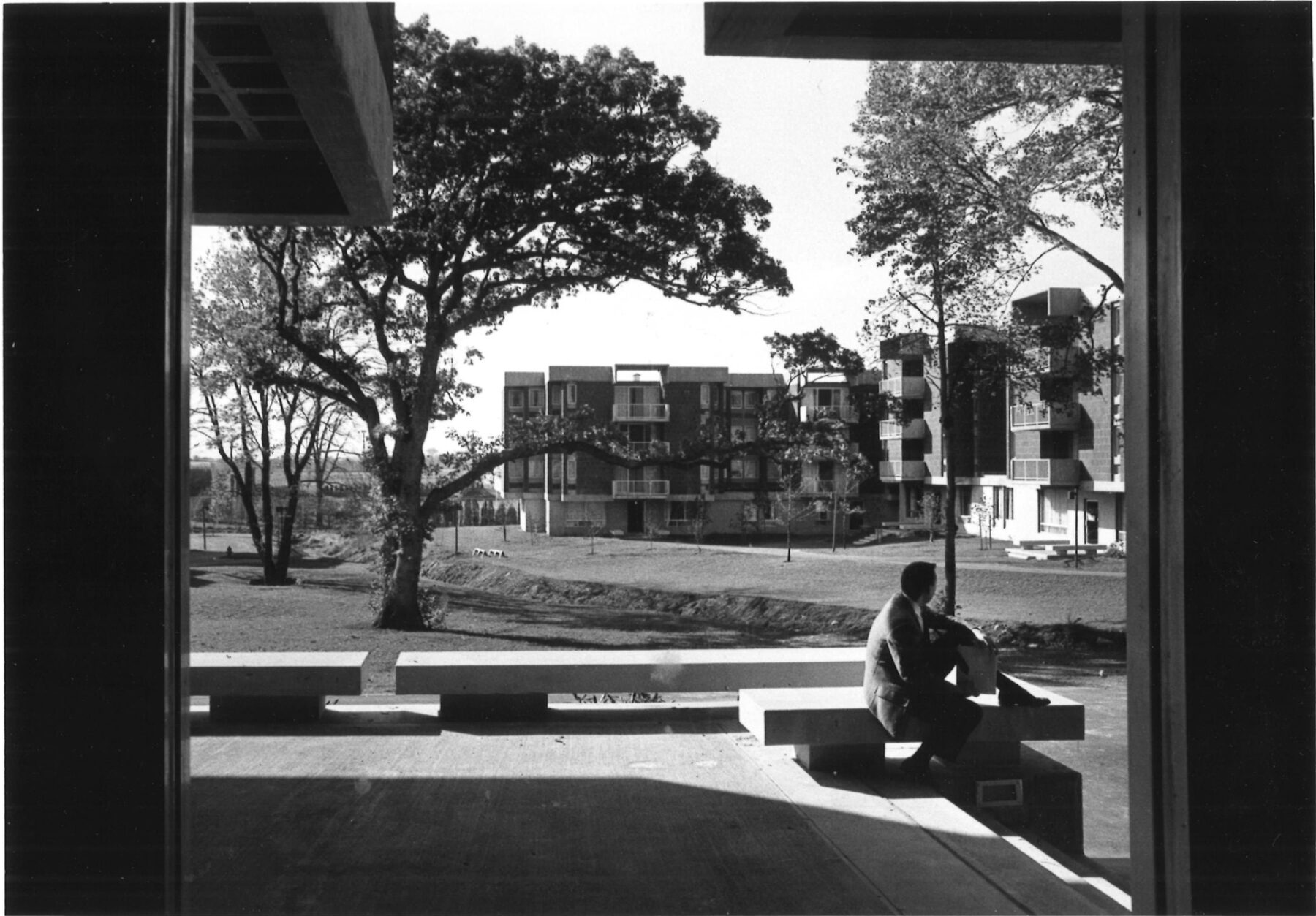
A brook winds through the green between the dormitories at URI
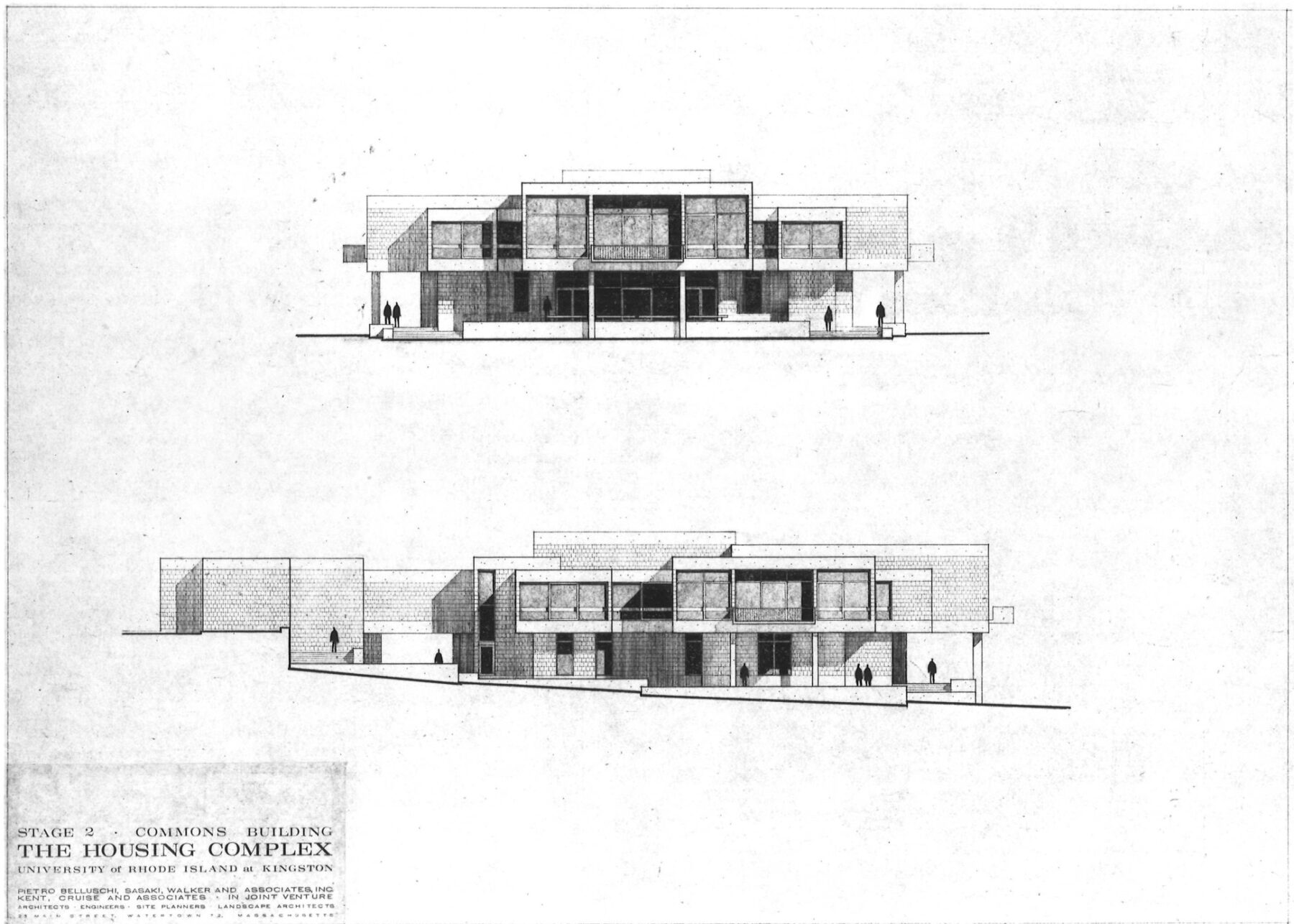
Elevations for the commons building at the URI dormitories
Sasaki teamed up with Pietro Belluschi, Walker and Associates, as well as Kent, Cruise and Associates for the URI Housing Complex, an early example of a fully integrated design project. It demonstrated Sasaki’s ability to assemble and work within a team of experts across disciplines.
As Peter Walker and Melanie Simo note in Invisible Gardens, Hideo’s practice emphasized “the proper setting of buildings.”[2] At URI, these dormitories tiptoed around a brook sloping gently down to a pond, creating a scenic backdrop for student life.
Hideo retired from his practice in 1981. In the following years, our firm evolved through iterations of structure, geographic reach, and project focus as designers responded to changing demands. One shift in the academic world was a slowdown in the rapid growth of the postwar student population and a decline in expansionary campus plan projects. Instead of building outward into surrounding neighborhoods, colleges began turning inward to build projects in their existing campus cores[5].
As these infill projects became more popular and the United States emerged from a recession in the early ‘90s, Sasaki turned back to our campus planning roots while deepening the bench of our architectural practice. We staked out expertise in two new forms of built work—student life centers and recreational facilities, staples of the firm’s architectural portfolio. Our designers also helped pioneer the concept of a campus recreation center[5], which made physical wellness a fixture of campus life for athletes and non-athletes alike. These bold designs reflect the value academic institutions placed on a holistic education and the quality of student life beyond the classroom.
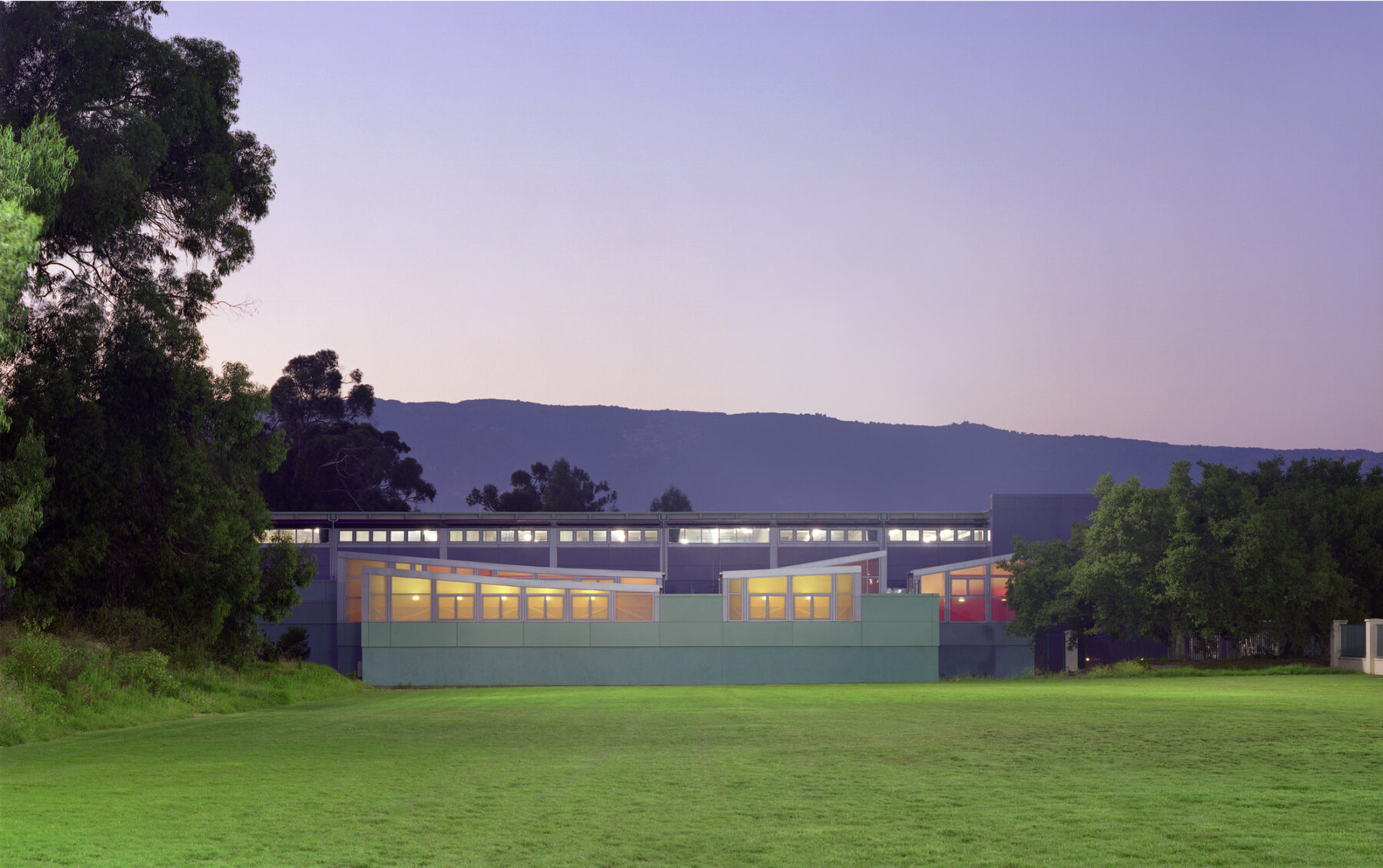
Mountains rise above the stepped rooflines of the Recreation Center at UCSB
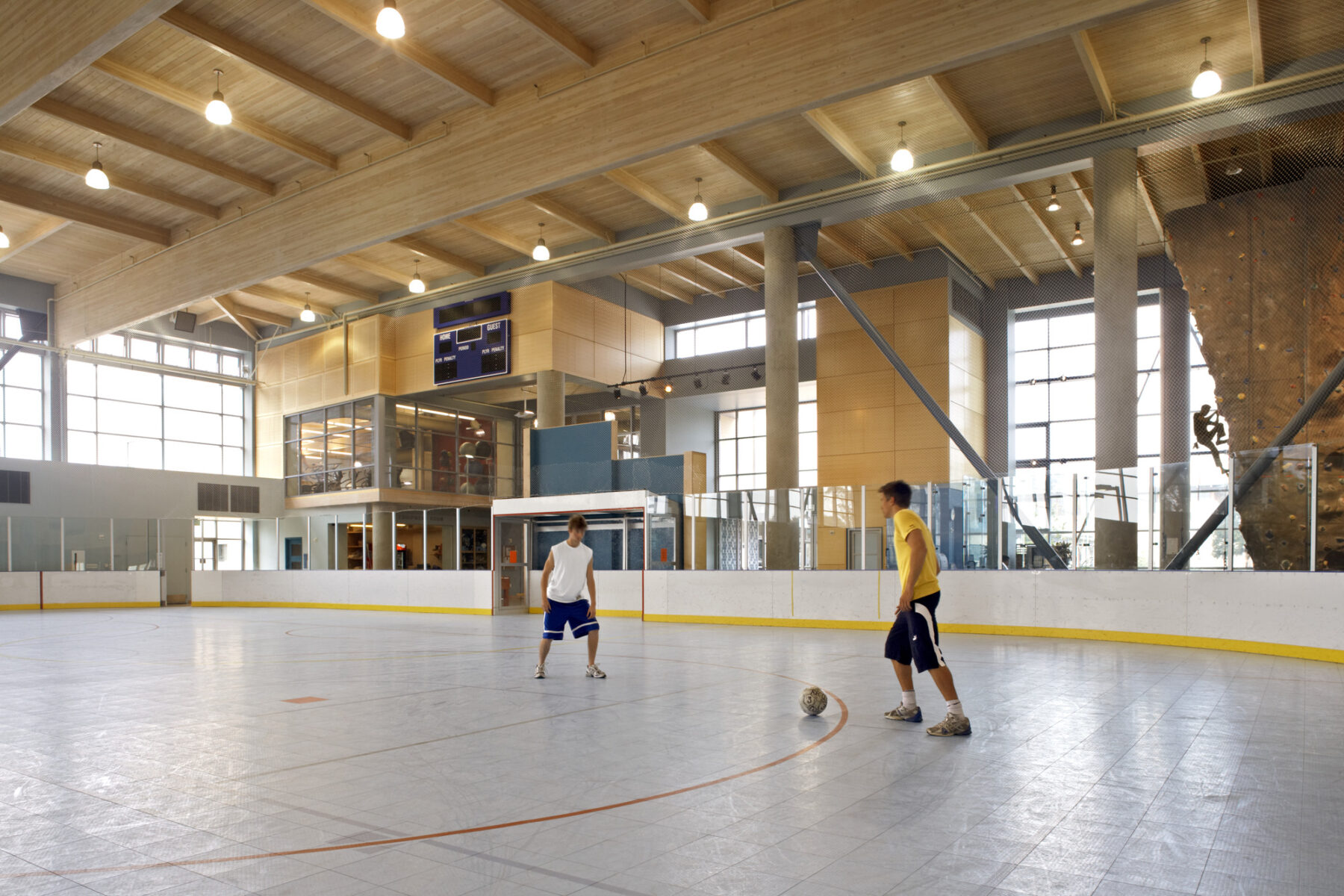
The Recreation Center accommodates a wide range of athletic activities
Sasaki’s expansion of UCSB’s recreation center demonstrates that even 15 years after the departure of our firm’s founder, the idea of carefully siting a building was still central to our design approach. The structure joined an existing recreation and aquatics complex within larger landscaped grounds. The building’s terraced massing angles views towards the Santa Ynez Mountains beyond, and its location on the site preserved several oak trees and a historic eucalyptus grove.
Ahead of its time, the project utilized heavy timber framing, as well as maple panels and glass walls to create an airy and inviting space. Students, faculty and staff feel connected to the surrounding landscapes as the building lets in the warm light Southern California is famous for.
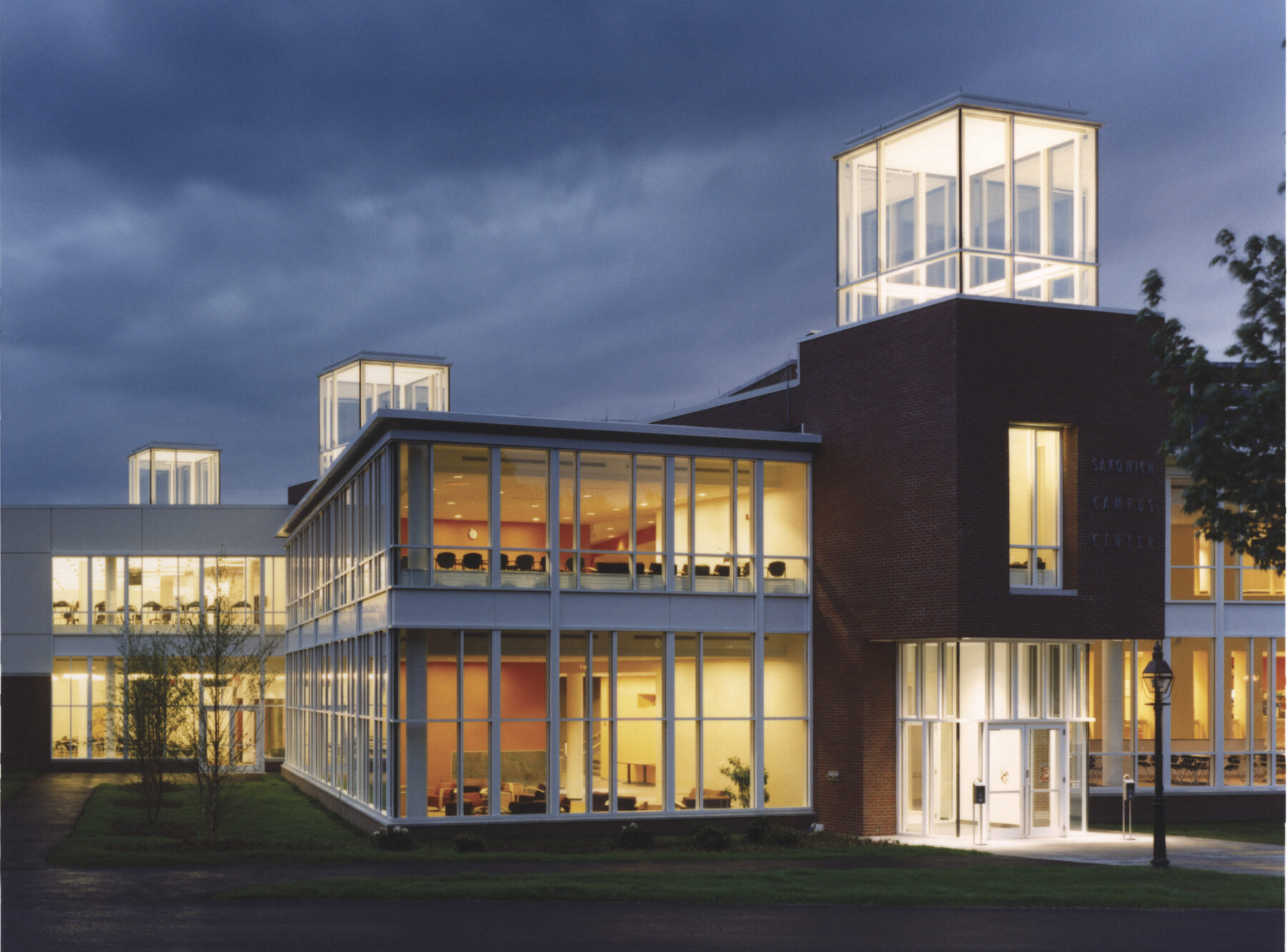
The three beacons of the Sakowich Campus Center mark the course of the “Main Street” through the middle of the building
Another case study in integrated design, the Sakowich Campus Center consolidated and connected student life at Merrimack College in a vibrant new complex. An existing pathway through the core of the campus became a new “Main Street” through the middle of the building, marked by three iconic glass beacons lighting the corridor’s interior during the day and the campus treeline at night. The complex combines different types of programs and sports facilities—each with a varied floor and ceiling system specific to that activity.
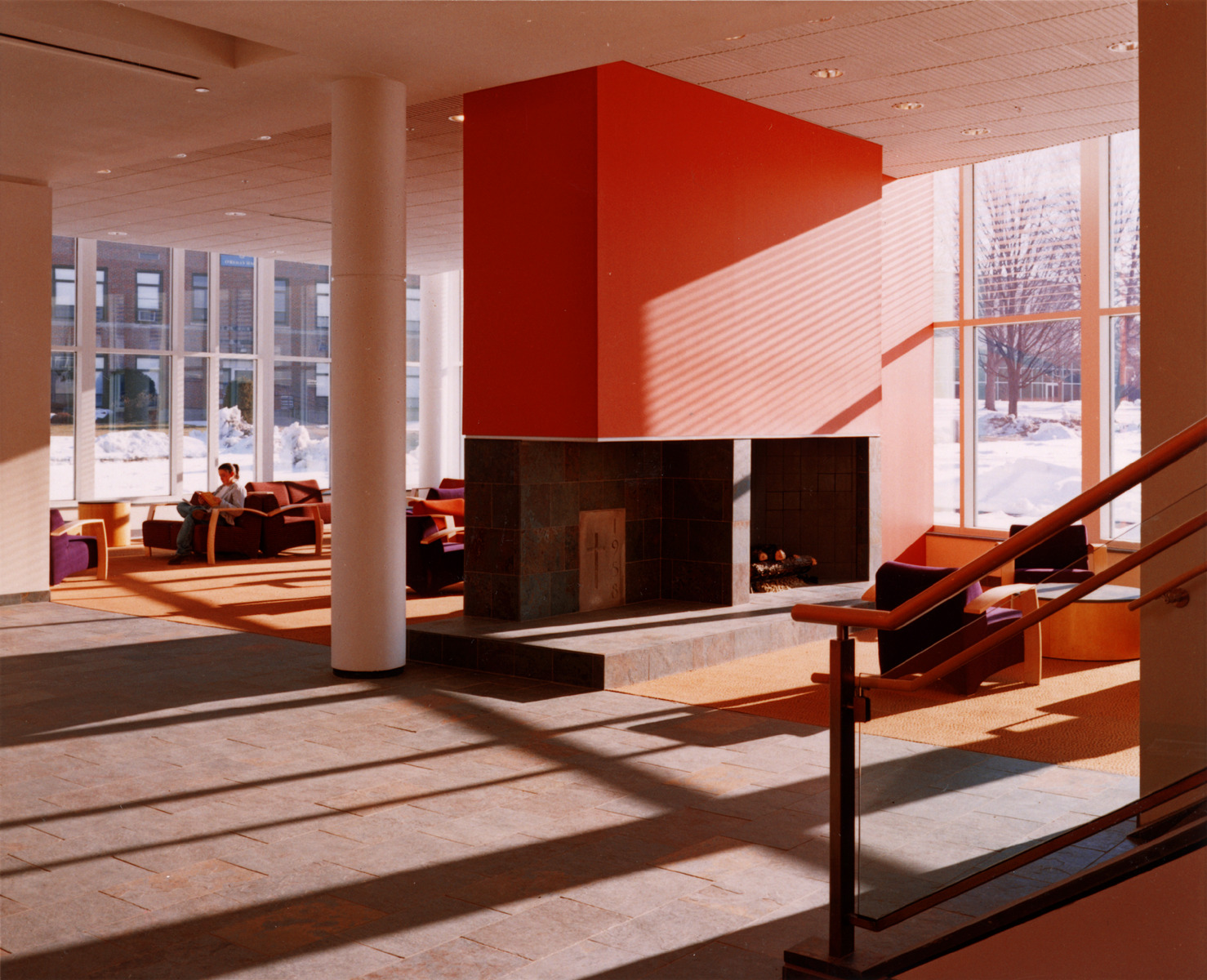
A fireplace anchors a common room in the Campus Center
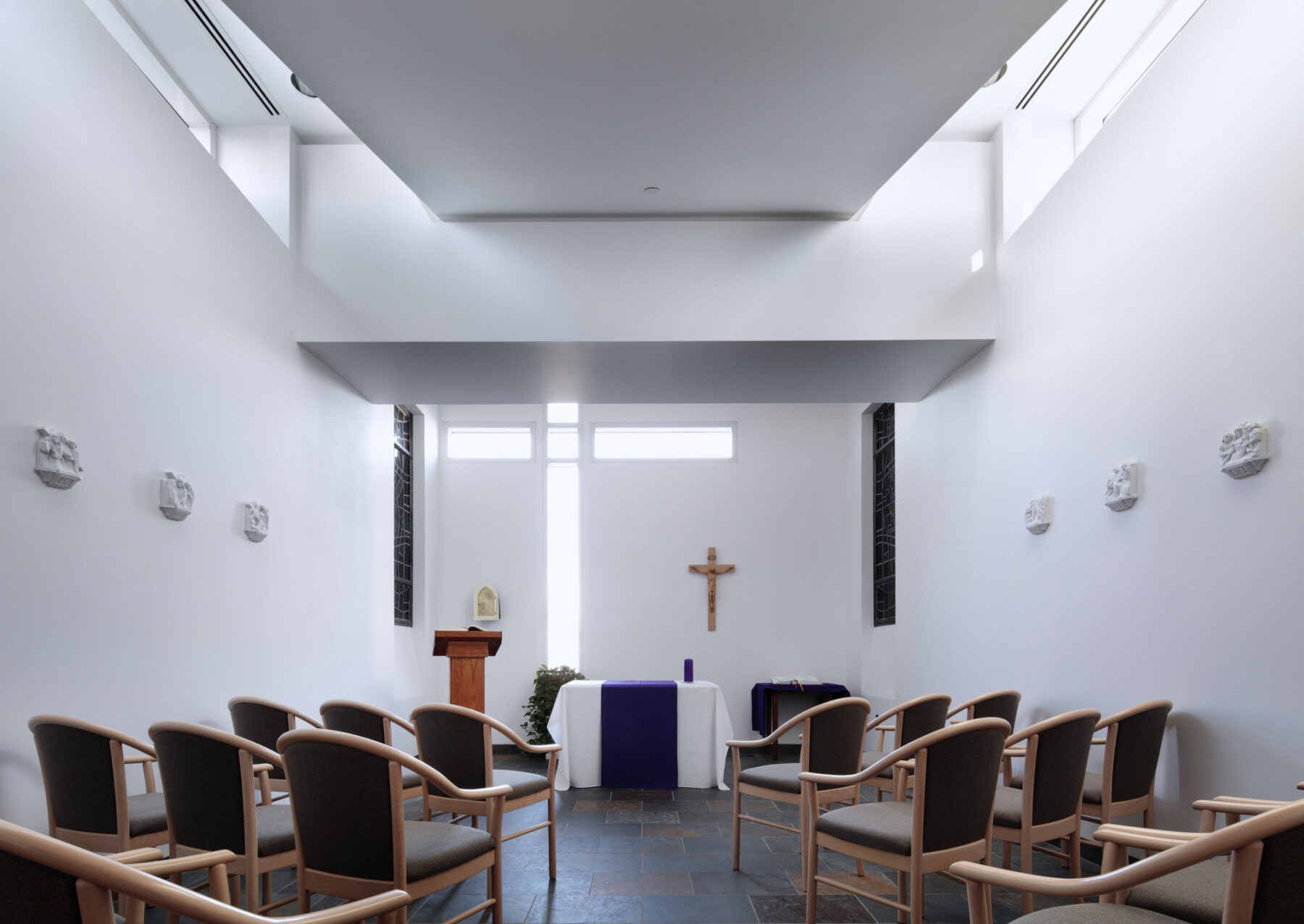
Chapel at the Campus Center
Much more than a building, the Sakowich Campus Center became the heart of campus life. It stands as the centerpiece of the school and brings the community together to share, discuss and collaborate. Projects like the Sakowich Campus Center and UCSB expansion reflect both the evolution of higher education design and how our practice has grown.
Contemporary institutions of higher learning must reckon with a different relationship to “place” than they’ve had in the past. Today, the very meaning of place is challenged by the saturation of the internet into almost every aspect of modern life; the globalization of economies and their increasingly mobile populations; and a pandemic that has fundamentally changed how we come together to live, learn, and work. Placelessness, however, is not inevitable. In this new era, it’s important that institutions invest in a sense of place, creating welcoming campuses that feel authentic to their identity, mission, and location.
Recent university projects are designed to be more integrated with their surrounding communities, more inclusive of diversifying student bodies, and more committed to sustainable development practices. A strong but flexible sense of place binds academic communities together as the boundaries between inside and outside, on-campus and off-campus, and the internet and real life become more fluid. Higher education institutions still seek out Sasaki’s expertise in engaging those communities and distilling a unique sense of place.
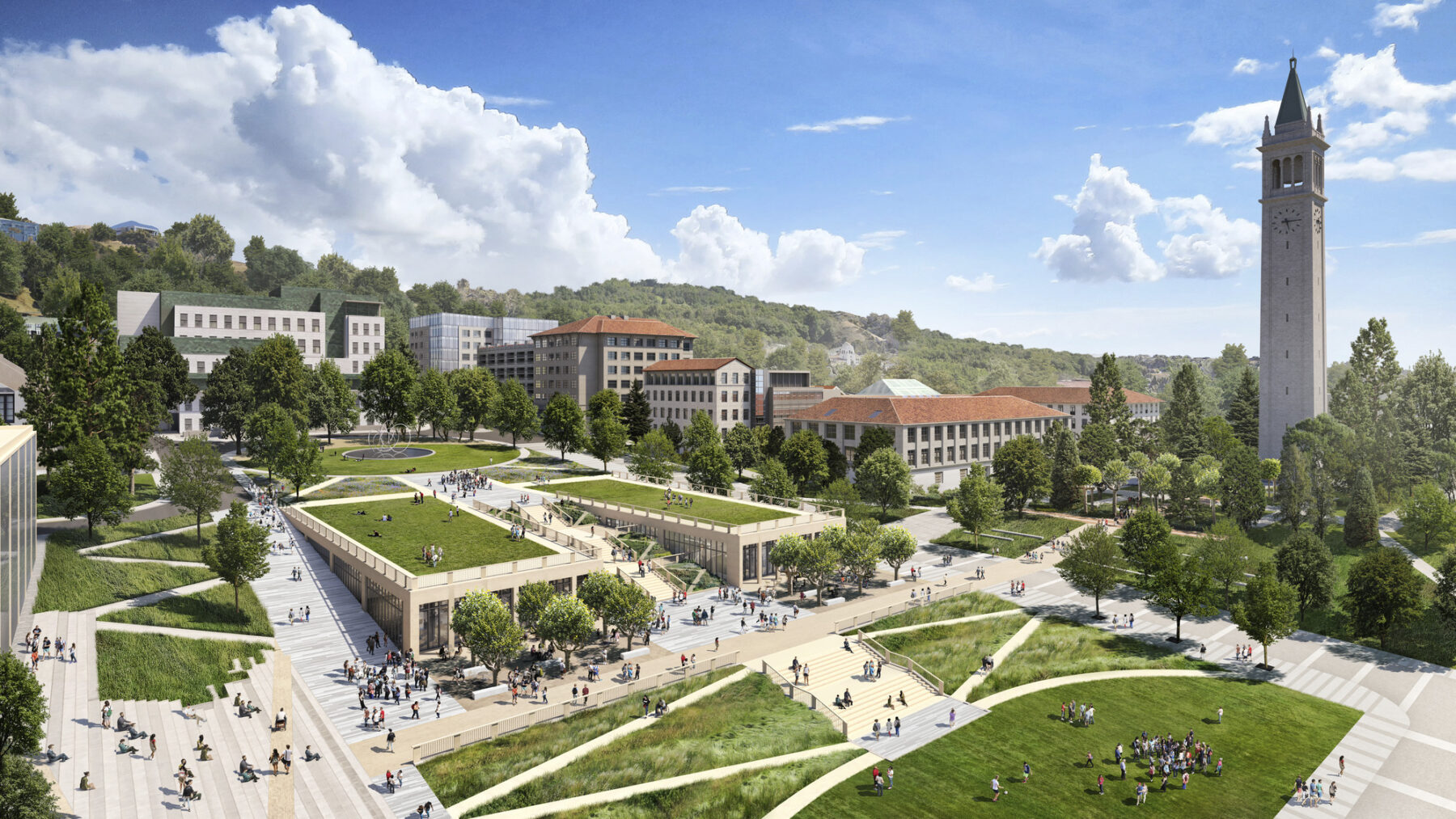
The new campus life building, integrated into the landscape, would replace an existing twelve-story structure and open up views toward the Golden Gate
At the University of California, Berkeley, the institution is renowned not only for its academic excellence, but also for its spectacular hillside views of the San Francisco Bay. In recent years, however, this enviable setting and steep terrain has challenged the school’s efforts to expand and improve accessibility.
Our design idea proposes 6.5 million square feet of new and renovated academic and student life space and 11,730 new beds of housing with thoughtful infill throughout the campus. It improves accessibility with new pathways and pedestrian bridges across the site’s challenging topography. A proposed student center sunk into the hillside of the Glade opens up the view to the Bay, returning a sense of cohesion and identity to the historic center of the campus. The campus plan was also crafted alongside a long range development plan (LRDP) that’s among the first of its kind.
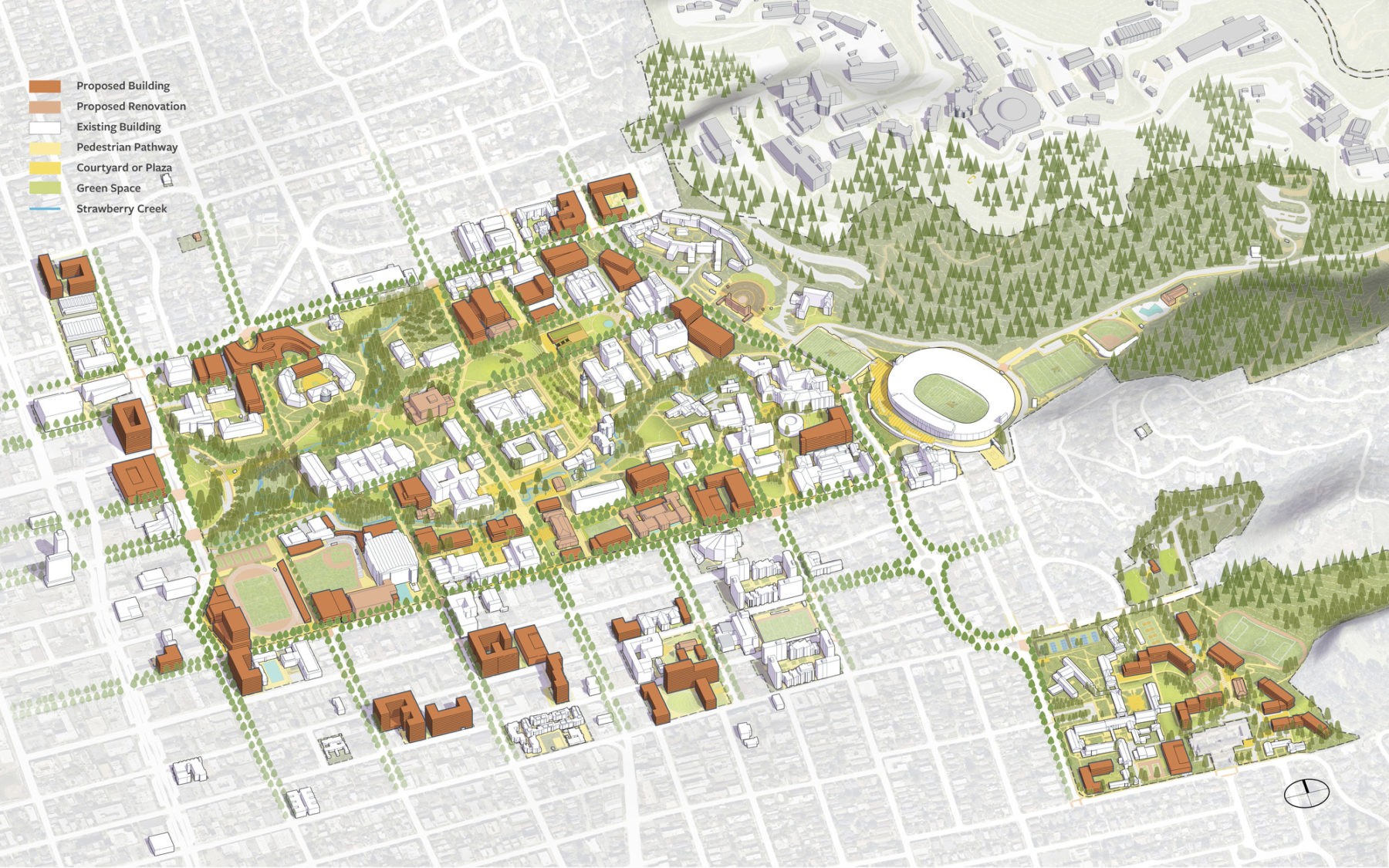
Within a constrained urban site, the plan celebrates Berkeley’s unique historic, ecological, and cultural assets while providing space to meet contemporary needs and strategic initiatives
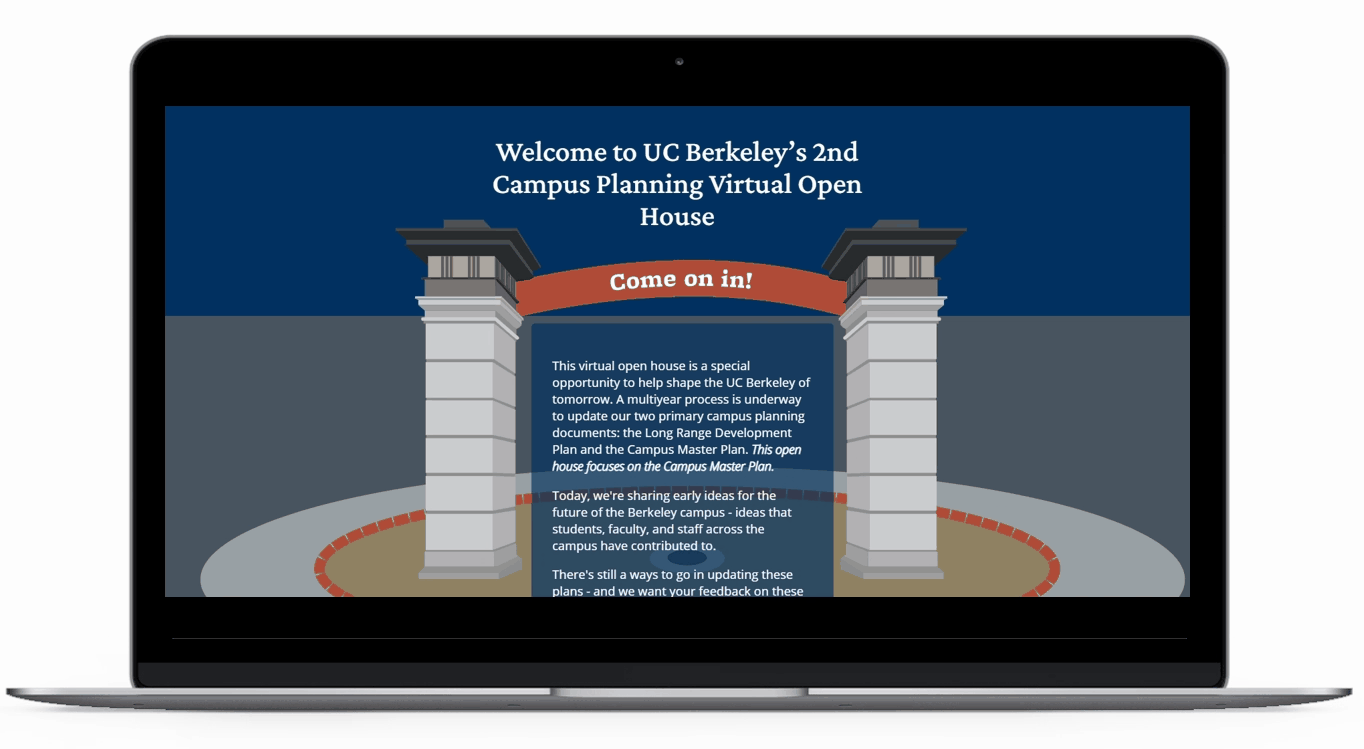
Engagement tools developed in-house helped build consensus across the UC Berkeley community
Additionally, new community engagement tools developed in-house with our Strategies team built consensus for the new plan across Berkeley’s administrators, faculty members, students, and staff. This technology-facilitated community buy-in has become central to large-scale campus planning, and carries Hideo’s approach of inclusive design into the twenty-first century.
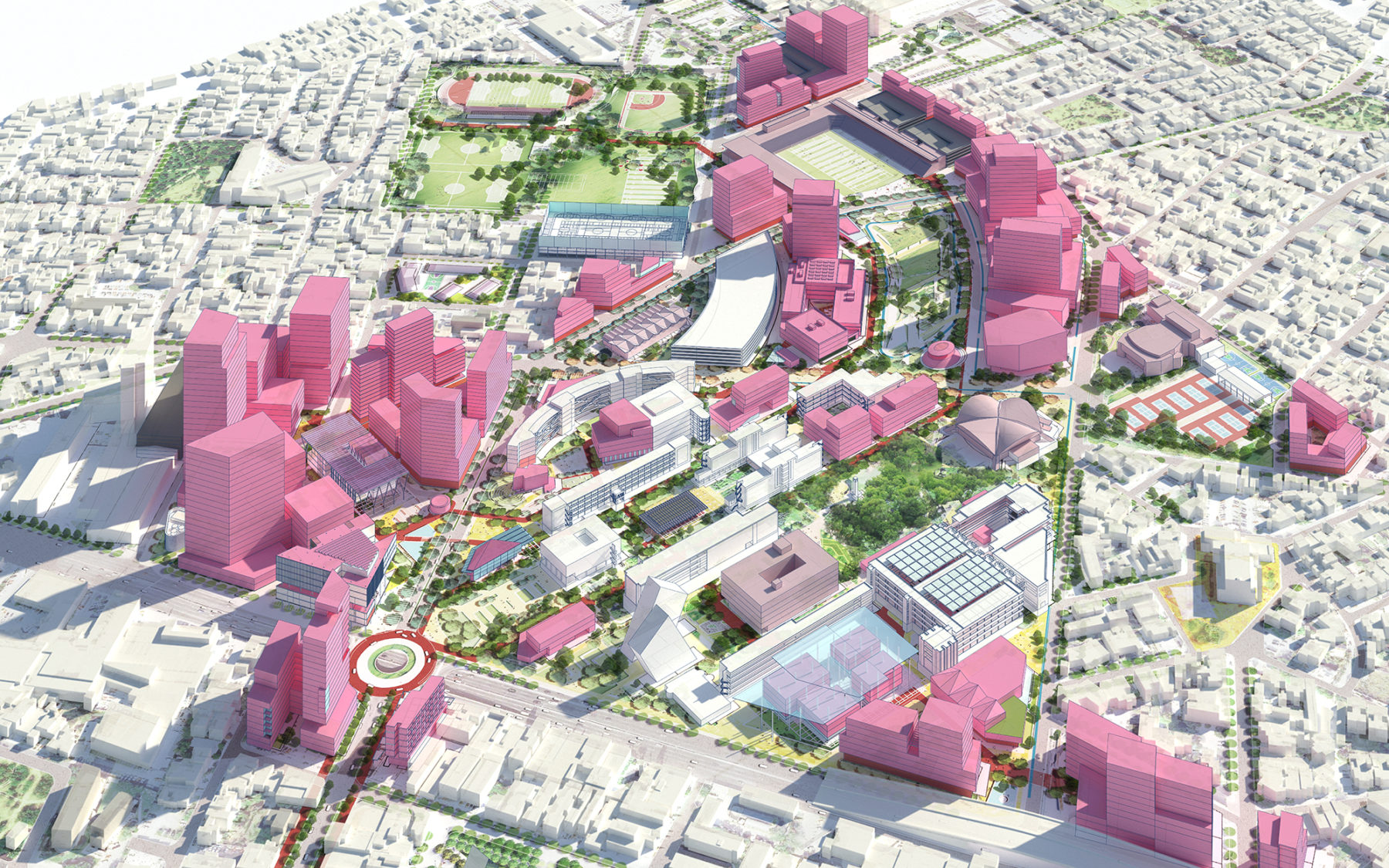
The Urban Regeneration Plan for Tecnológico de Monterrey establishes a framework for the campus and adjoining neighborhoods to attract R&D investment and activate the district
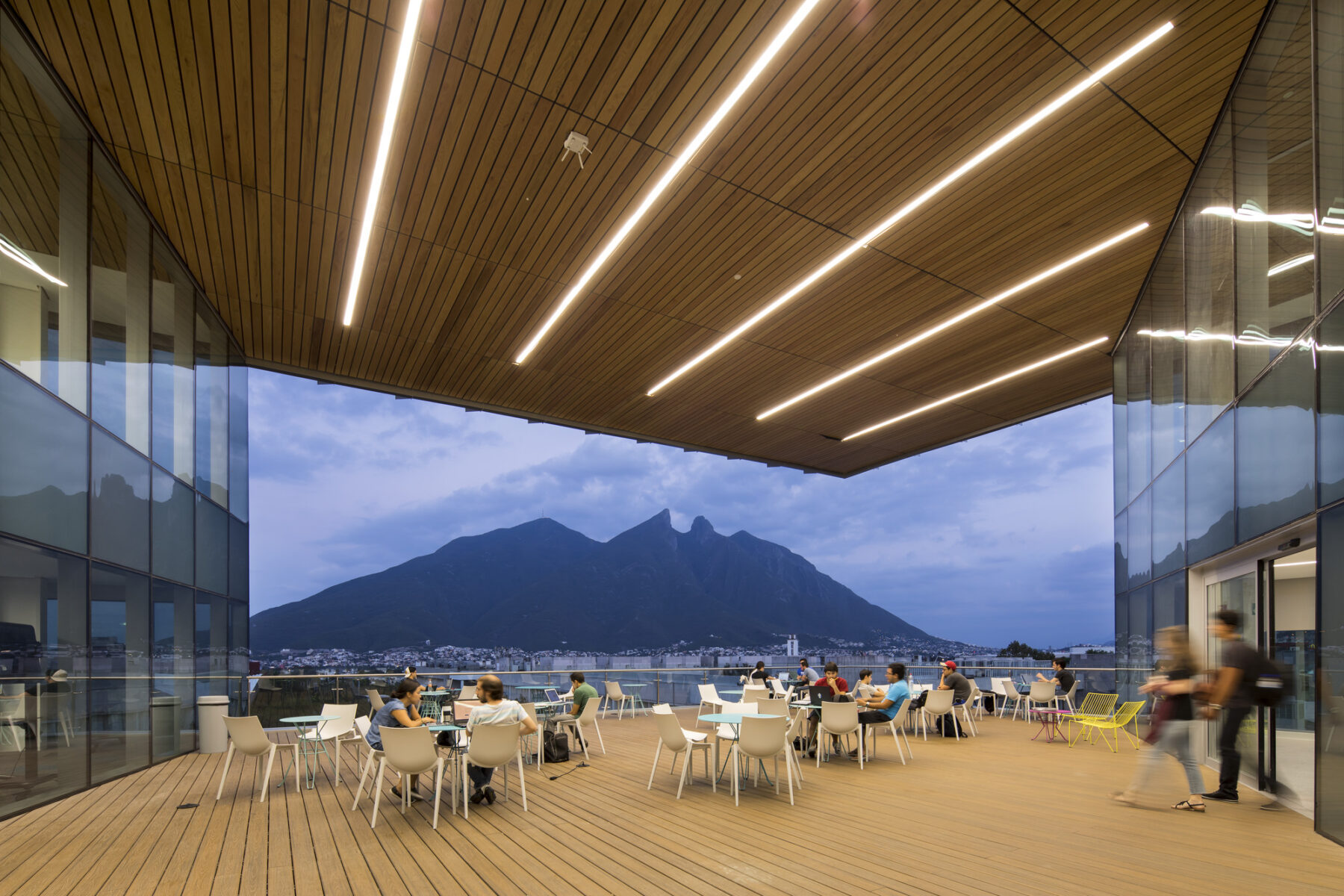
An open café terrace on the upper floors of Monterrey Tec’s new library overlooks the city of Monterrey and the Sierra Madre mountain range
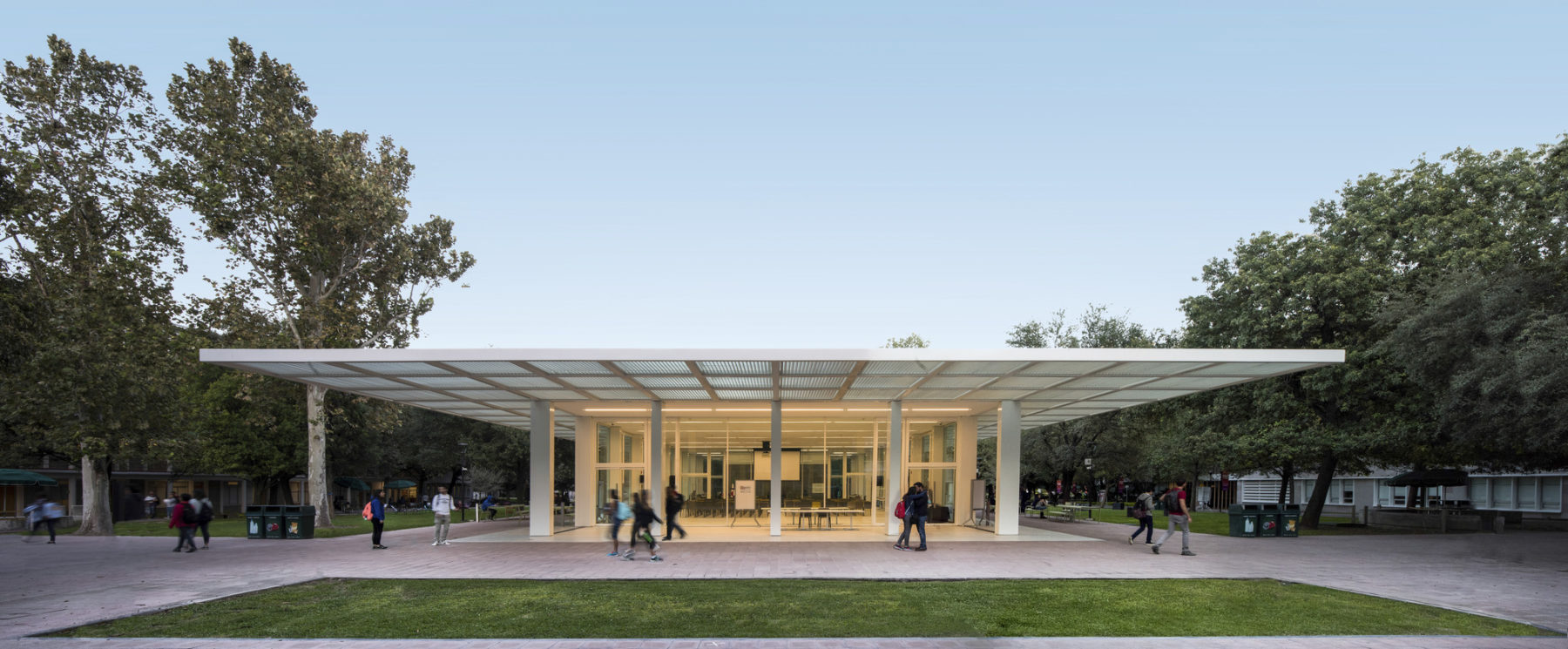
La Carreta Pavilion, where students, faculty, staff, and the broader community can engage with one another, collaborate, and share ideas
In Monterrey, Mexico, the designs for the Main Library, La Carreta Pavilion, forthcoming Innovation Hub, and surrounding R&D districts all emerged from Sasaki’s Urban Regeneration Plan for Tecnológico de Monterrey—one of Latin America’s premier research universities.
These buildings create links between the center of campus and burgeoning new districts at the boundary of school and city, where technology companies and community organizations gather to draw on the school’s knowledgeable faculty and student body. Now, Tecnológico de Monterrey is becoming a leader in stimulating national urban and economic regeneration—and proving the power of Latin American universities as engines of innovation and entrepreneurship.
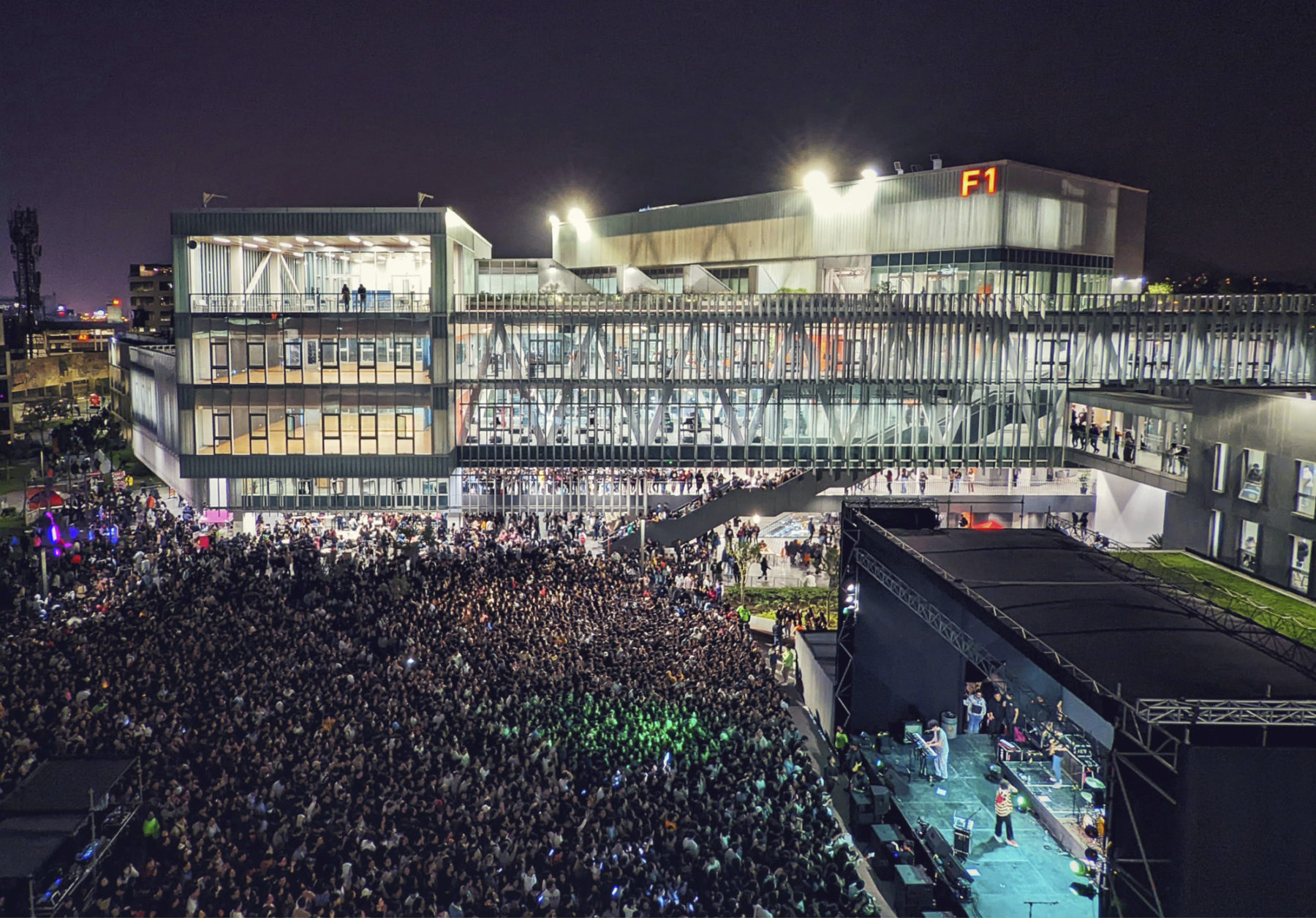
A concert is held on the new plaza in front of the Wellness Center
With our planning assistance, the administration at the Universidad de Lima set out to dramatically transform their compact campus with new recreational, academic, and social spaces around its historic core. They hoped that if they enticed their largely commuter student body to stay on campus after class, more robust student life would develop. In turn, they believed in the power of place and the value of design in bringing people together.
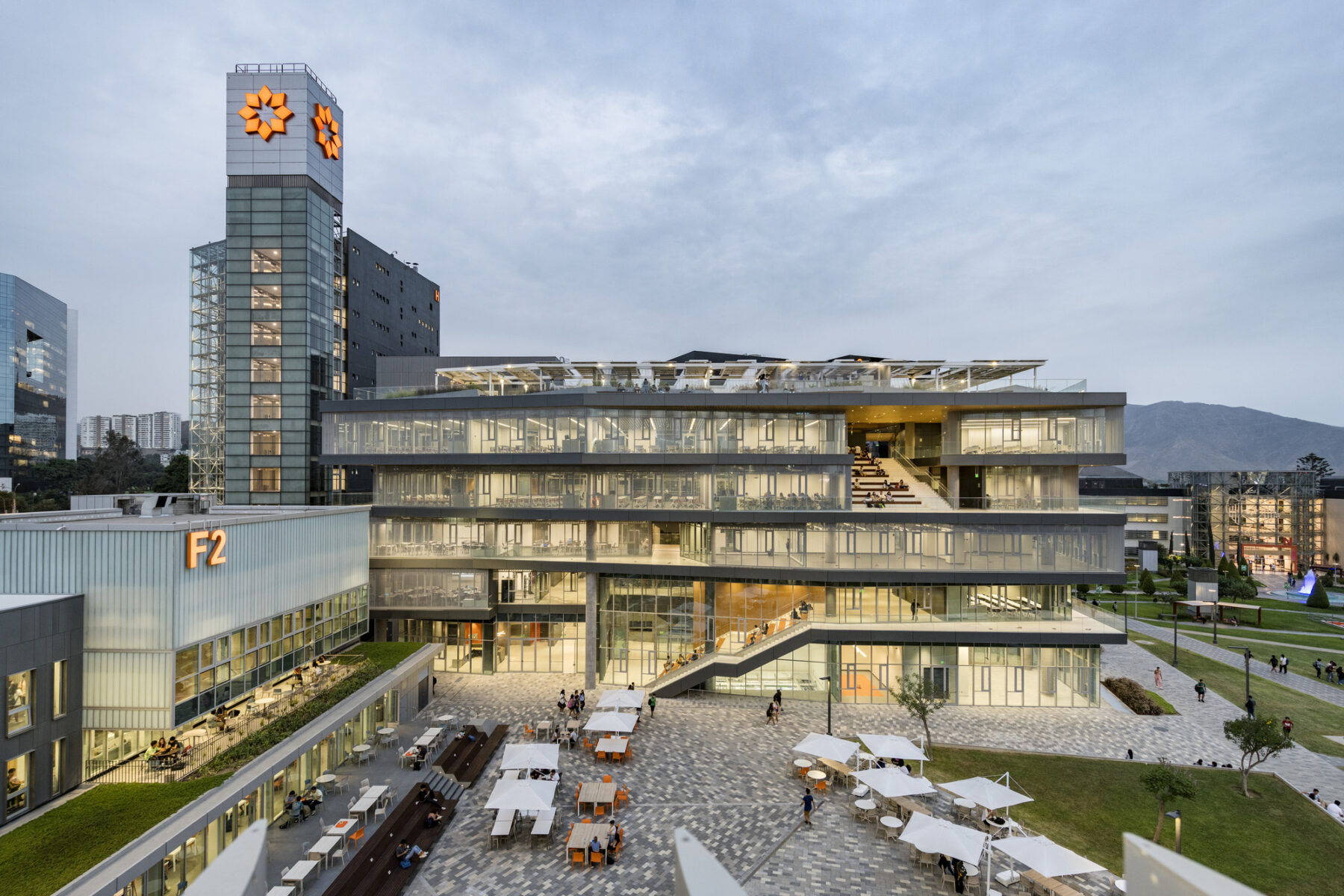
View of Engineering Innovation Center and Plaza from the Wellness Center terrace
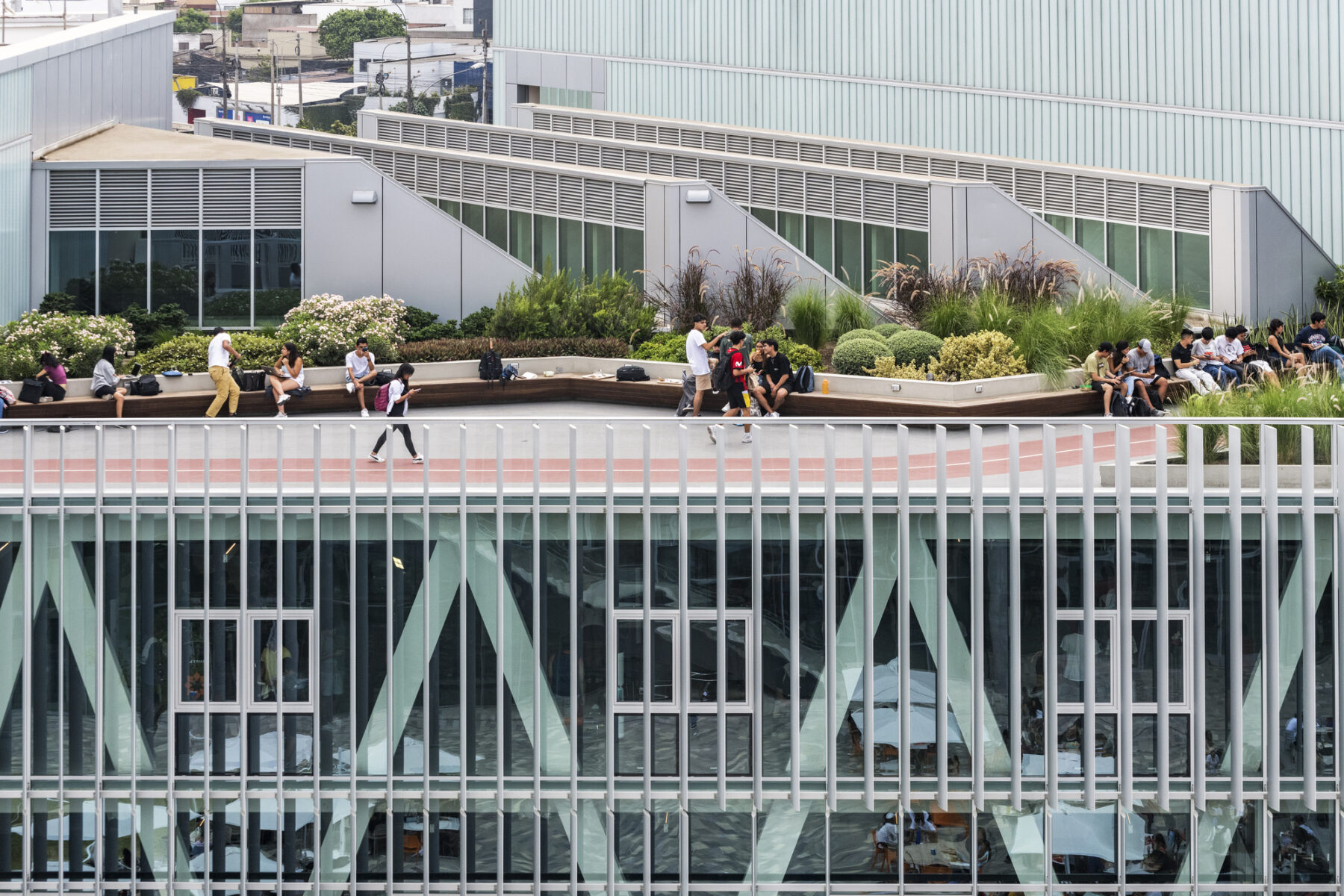
Students relax on the landscaped roof deck of the Wellness Center
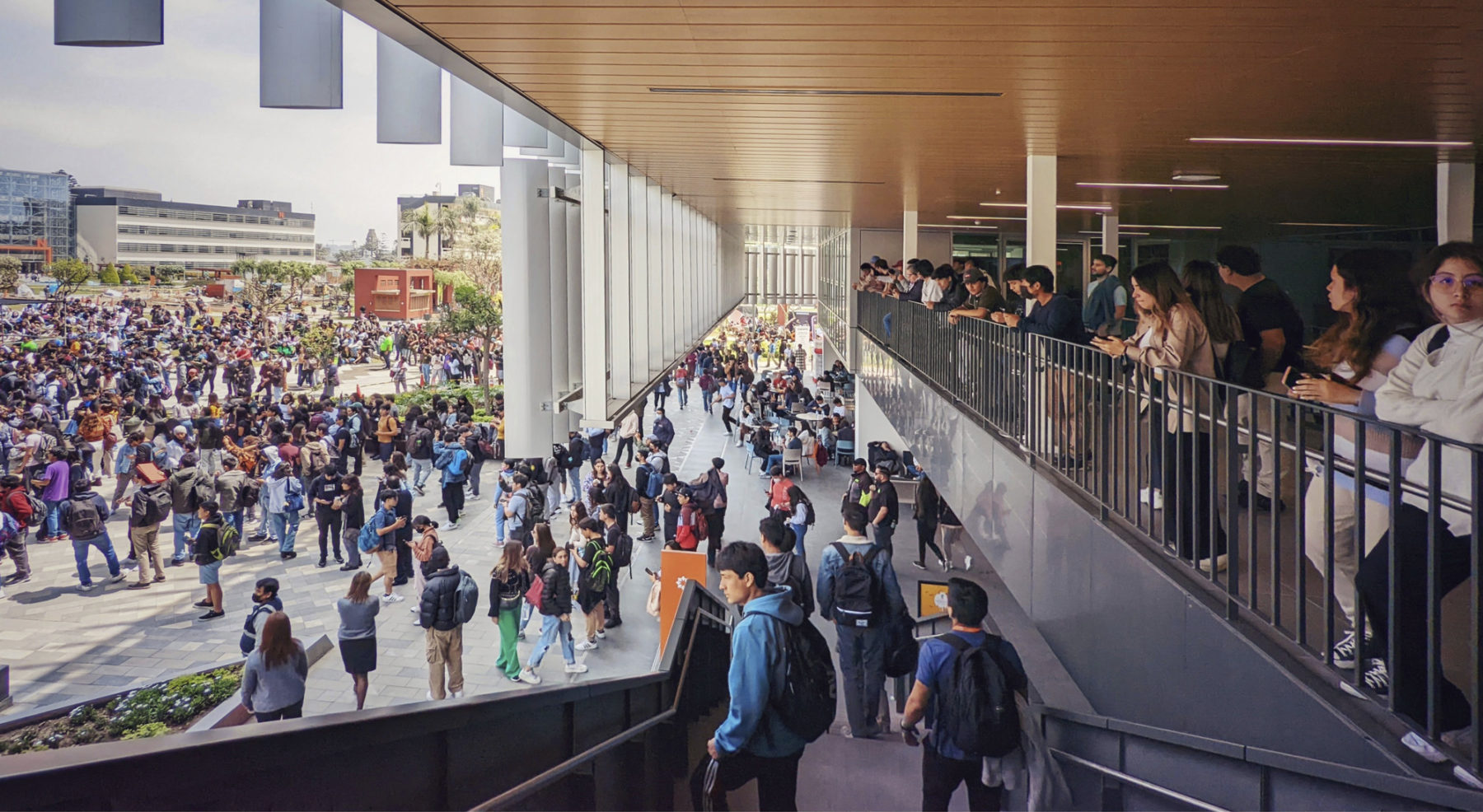
The temperate climate in Lima encouraged a porous boundary between inside and outside, where the rhythms of academic and social life blend and complement each other
View of Engineering Innovation Center and Plaza from the Wellness Center terrace
Students relax on the landscaped roof deck of the Wellness Center
The temperate climate in Lima encouraged a porous boundary between inside and outside, where the rhythms of academic and social life blend and complement each other
Two years into the process, the COVID-19 pandemic shuttered in-person learning around the world. But rather than abandon the plan, the administration took the opportunity to build the Recreation, Wellness, and Student Life Center while students were off campus. When they returned, they embraced the building and outdoor plaza as a hub for big events and everyday gathering. The plan worked. A new Engineering Innovation Center opened across the plaza soon after, to be followed by a new Main Library and other academic facilities in coming years.
Now in 2024, more than 70 years after Hideo founded our firm, Sasaki’s campus portfolio has expanded across several design disciplines and all corners of the globe. Growth has brought new challenges, technologies, and institutional priorities. But the principles Hideo and his colleagues employed in the design of projects like the Foothill College and Boulder campuses are still central to our practice today: collaboration, breaking down barriers, and inclusivity. These values have proven timeless.
They have also increasingly become the values of institutions of higher education, as societal challenges evolve and campuses reflect a diversity of race, gender, age, ability, and background. Today, we see these ideas across our work: at the Massachusetts Maritime Academy, Sasaki worked with the administration to develop a master plan structured around a phased buildout of clean energy infrastructure and clean energy retrofits, facilitating their goal of zero emissions by 2035. At Virginia Tech, we envisioned a universally accessible landscape that removed barriers like stairs and curbs while integrating rest areas and ADA-compliant sloped paths across the campus. At the University of Kentucky, we engaged in a multiyear community engagement process to manifest the school’s values in its built environment with a novel diversity, equity, and inclusion (DEI) plan that would give student affinity groups spaces of safety and pride on campus.
As schools set their sights on critical issues like decarbonization and DEI, they are also imagining new modes of teaching and planning for the future. At Sasaki, we return to the story of our founder and to a shared culture of learning to meet the moment. Hideo’s legacy has propelled our practice to the forefront of shaping campuses and higher education spaces for over seven decades. As new challenges arise, our values of inclusion and integrated design continue to guide the way forward.
From concept to campus, we remain committed to improving higher education for all.
[1] #27. Sasaki, Hideo [part 2], Japanese American Evacuation and Resettlement Records, BANC MSS 67/14 c, folder T1.956 (2/2), The Bancroft Library, University of California, Berkeley.
[2] Invisible Gardens: The Search for Modernism in the American Landscape, Peter Walker and Melanie Simo, 1994, MIT Press.
[3] Progressive Architecture. “Cutting the Slab Down to Size.” Progressive Architecture Magazine, vol. 47, no. 11, Nov. 1966. https://www.usmodernist.org/PA/PA-1966-11.pdf
[4] Emily Attwood. “The Evolution of Campus Recreation Facilities and Programs.” Athletic Business, 21 March 2017. https://www.athleticbusiness.com/facilities/rec-center/article/15149692/the-evolution-of-campus-recreation-facilities-and-programs
[5] American Places: In Search of the Twenty-First Century Campus, M. Perry Chapman, 2006, American Council on Higher Education.
In SCUP Journal, principal Mary Anne Ocampo delves into how the University of Kentucky spearheaded a first-of-its-kind DEI Facilities and Spaces Plan
Sasaki collaborated with the QU community to distill the university’s mission into a flexible and engaging learning environment
Some of the most influential and cherished settings on American college campuses are the outdoor spaces that stitch buildings together. How do successful landscapes come to be?